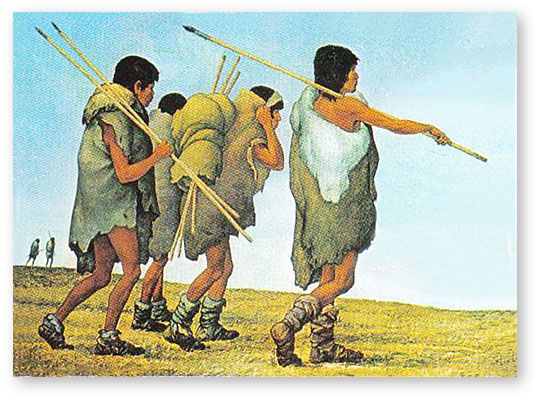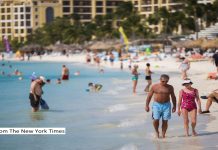Oranjestad — Nothing stood in their way and nowhere in the new world seems to have been too far to reach, if it only offered enough resources to make life easier. It was the time when atmospheric conditions indicated that the average temperature -about twelve thousand years ago- was six to twelve degrees cooler than it is today, in the southwestern Caribbean area. Climate conditions were drier, but it gradually became more humid than what it is in present days. This was the time of the preceramic hunters and gatherers.
Yes, Aruba`s landscape was alsocovered with a greater amount of flora in thattime.The overall conditions in which these ancient marauders found this land upon their arrival was in every aspect much more favorable for people that were cultured and trained to carry everything with them on their back or as required, have technical skills andmake use of plants. Liketobe able to read the slightest atmospheric variations to predict the weather conditions or that greater sense of smell that was developed to distinguish scents of different animals, coming rain or ripen fruits. All this together and more contributed to an easy and a sustainableway of life in a harsh and wild environment.
Mother Earth
The island`s landscape and topography in many areas offered perfect layouts that formed zoneswhere people were able towalkfor hours under a green canopies of rain forest, where trees blocked the incoming sun light during the whole year. Forest consisting of mixed vegetation made out of ferns, orchids, vines and bromeliads Etc. Many of these plants have long disappeared and are to be considered extinct varieties, lost forever.
Who knows what medicinal properties, food source, color pigment or even an effective insect or vermin repeller these plants could have carried? Even though it is a small island, there were also places that were open grasslands or savannas covered with cactus and xerophilous, while other zones where made out of wet lands and natural salt pans. However there were no mango tree or coconut palms, tamarind juice or watermelons and everything they knew about electricity was that he was the father of fire, wind and water and that the earth was their mother and mother of all things. He, who came from beyond the clouds and lit up the night skies with his flash and thundering voice.
Bays of Aruba
We must try to imagine by picturing how the southern coast was covered whit a thick mix of many mangroves varieties that had their roots in the sea direct in front of the coast line, forming impenetrable and different kind of forests this time, these mangroves offered on its part, a great deal of marine resources including timber. Coastal mangrove forests grew so thick and dense that it only gave way in a few places to reach shore with dug out tree trunk canoes. These access points to the shore, in time became bays and some are still in use today. Places like the Commandeursbaai at Savaneta or the Spanish Lagoon, Barcadera, the Lagoon and Paardenbaai in Oranjestad.
However, there used to be another bay in Oranjestad which was called Taratata , the only bay that carried the Toponym or name given by our Paleo hunters. It is what probably meant, the place of arrival, related to Taratara in Venezuela that means, place of departure in the Paleolithic language. Regrettably Taratata has been absorbed with the expansion of the late container haven at Paardenbaaitogether with its name almost forgotten in time.
Greater Area
Many different animals lived in the greater area, some familiar but many others only exists today in old records, books and in fossil exhibits in museums or stored in warehouses around the globe as testimony of their once existence and as world extinct fauna collections. Among the extinct mega fauna we find the camel, giant armadillo, short-faced bear, long-horned bison, mastodon, tapir, ground sloth, saber-toothed tiger, mammoth, dire wolf, and horses on the American continent (the present horse was later reintroduced by the conquistadors)In the beginning of the Paleo-Lithic era, occupation of the American continent started by archaic hunters who followed these big mammals like the mammoth in to North America.
One possible route that these hunters could have followed to reach the Caribbean was from the Floridian pan handle jumping island to island till reaching the southern continent or jumping from the Yucatan peninsula to Cuba and the islands.And the most probable route of accessing Aruba most have been from the South American continent. This would have been the shortest and easiest way to reach the island. There is no doubt that the distance must have been closer to the isthmus of Paraguaná and sea levels where 60 to 90 meters lower further in time.
The land that today forms the land stretched out till the foot of the Sta. Anna hill in South America, so that the island was attached to the South American land mass beyond sea level,since we are positioned on the continental shelf, meaning thatmany animals and variety of sub-archaic cultures within an archaic context during thousands of years could have reached this part of the world by just walking.
Source; Island Insight column by Etnia Nativa.

















